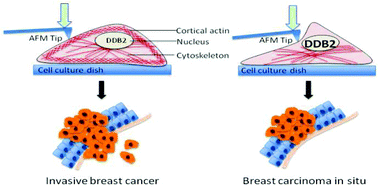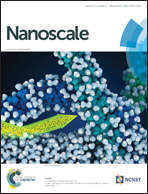DDB2 (damaged-DNA binding 2) protein: a new modulator of nanomechanical properties and cell adhesion of breast cancer cells
Abstract
DDB2, known for its role in DNA repair, was recently shown to reduce mammary tumor invasiveness by inducing the transcription of IκBα, an inhibitor of NF-κB activity. Since cellular adhesion is a key event during the epithelial to mesenchymal transition (EMT) leading to the invasive capacities of breast tumor cells, the aim of this study was to investigate the role of DDB2 in this process. Thus, using low and high DDB2-expressing MDA-MB231 and MCF7 cells, respectively, in which DDB2 expression was modulated experimentally, we showed that DDB2 overexpression was associated with a decrease of adhesion abilities on glass and plastic areas of breast cancer cells. Then, we investigated cell nanomechanical properties by atomic force microscopy (AFM). Our results revealed significant changes in the Young's Modulus value and the adhesion force in MDA-MB231 and MCF7 cells, whether DDB2 was expressed or not. The cell stiffness decrease observed in MDA-MB231 and MCF7 expressing DDB2 was correlated with a loss of the cortical actin-cytoskeleton staining. To understand how DDB2 regulates these processes, an adhesion-related gene PCR-Array was performed. Several adhesion-related genes were differentially expressed according to DDB2 expression, indicating that important changes are occurring at the molecular level. Thus, this work demonstrates that AFM technology is an important tool to follow cellular changes during tumorigenesis. Moreover, our data revealed that DDB2 is involved in early events occurring during metastatic progression of breast cancer cells and will contribute to define this protein as a new marker of metastatic progression in this type of cancer.



 Please wait while we load your content...
Please wait while we load your content...